Abstract
During November 1996 to January 1997, a survey was conducted at 5 Canadian purveyors to measure the prevalence of injection site lesions in the top butt, boneless blade, outside round, inside round, and eye of the round. As trimmers were cutting these subprimals into steaks, technicians monitored each steak for grossly obvious scars. These scars were trimmed, weighed, and scored as either a "clear scar," "woody callus," or "cyst." All scars were subsequently examined histologically and classified as a "clear scar," "woody callus," "scar with nodules," "mineralized scar," or "cyst." Pieces were observed for broken needles while being processed and none were found. The estimated prevalence of injection site lesions was 18.8% (95% CI, 16.4% to 21.2%) in top butts, 22.2% (95% CI, 18.8% to 25.7%) in boneless blades, 4.9% (95% CI, 3.6% to 6.3%) in the eye of round, 1.8% (95% CI, 1.1% to 2.9%) in the inside round, and 7.6% (95% CI, 5.6% to 9.8%) in the outside round. Some top butts originated from American fed cattle; the estimated prevalence of lesions was 9.0% (95% CI, 5.9% to 12.9%) in American top butts and 22.3% (95% CI, 19.4% to 25.3%) in Canadian top butts. The median weight of the lesions varied among subprimals and ranged from 64 g to 117 g. Histologically, 13% of the scars were clear scars, 47% were woody calluses, 5% were mineralized scars, 34% were scars with nodules, 0.2% were cysts, and 0.9% were normal fat infiltrations. An economic analysis estimated an average loss of $8.95 per fed animal processed or $19 million dollars annually to the Canadian beef industry from injection scars.
Full text
PDF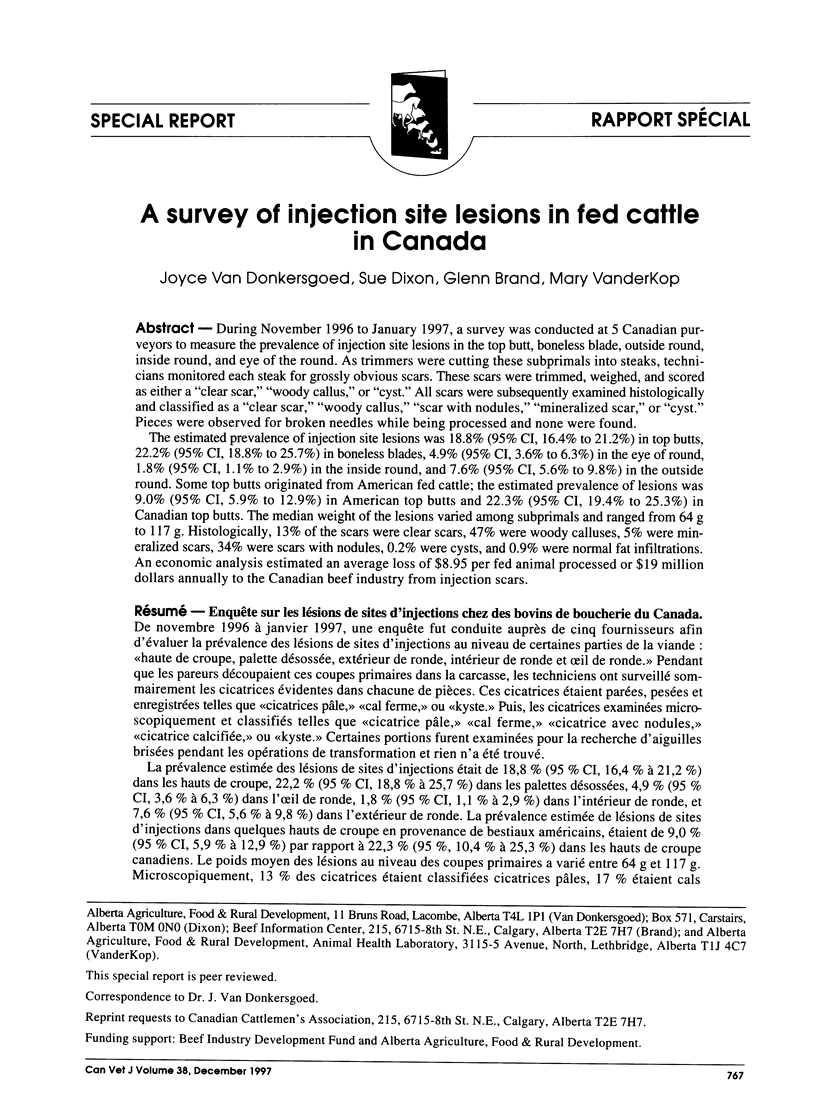
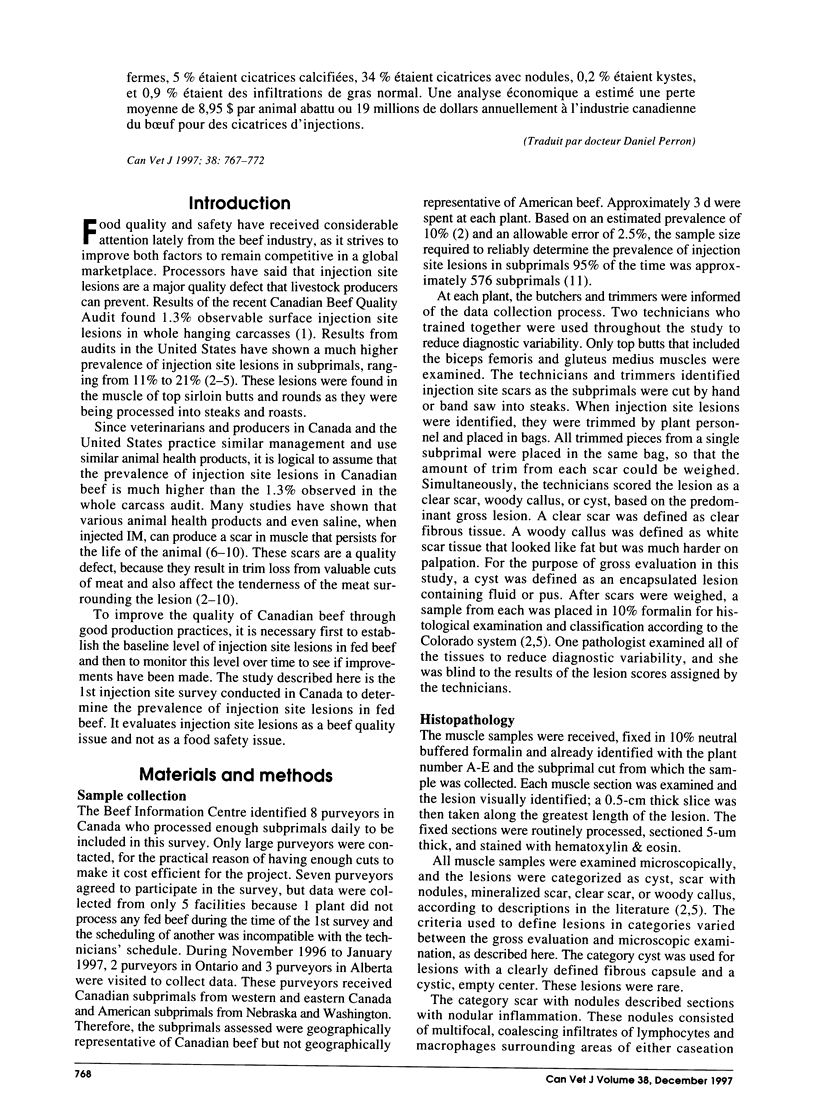
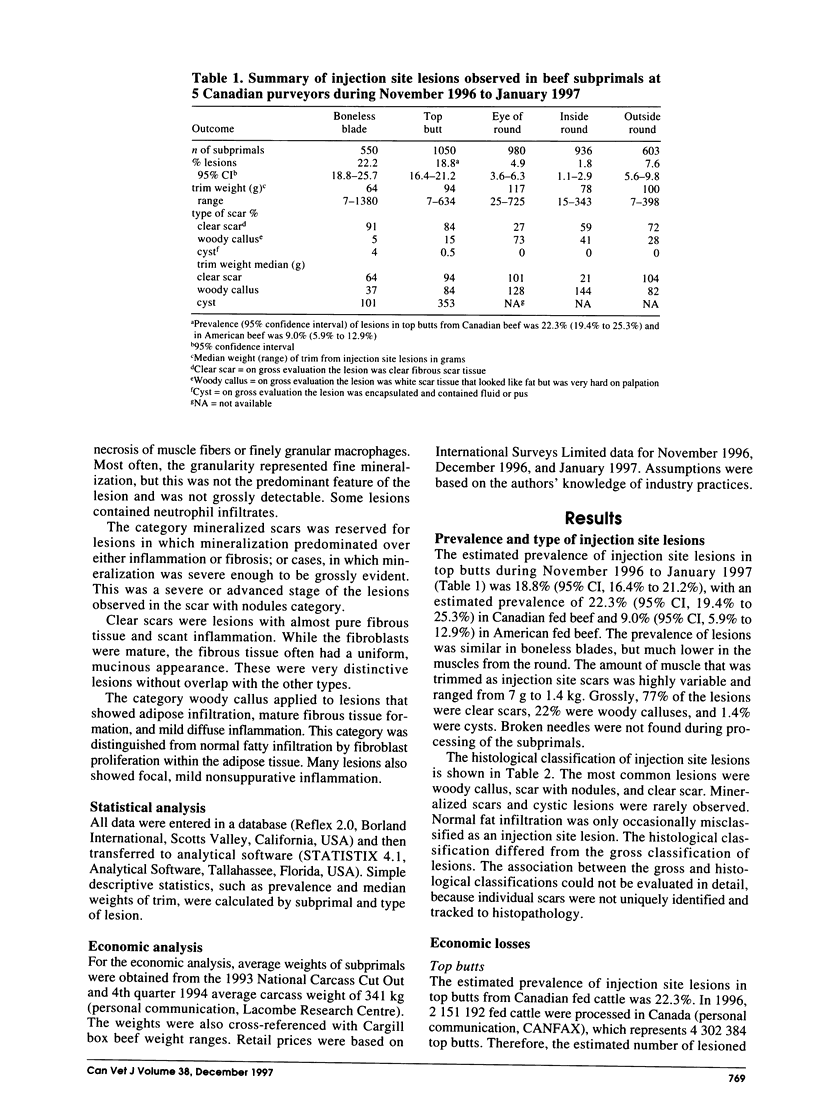

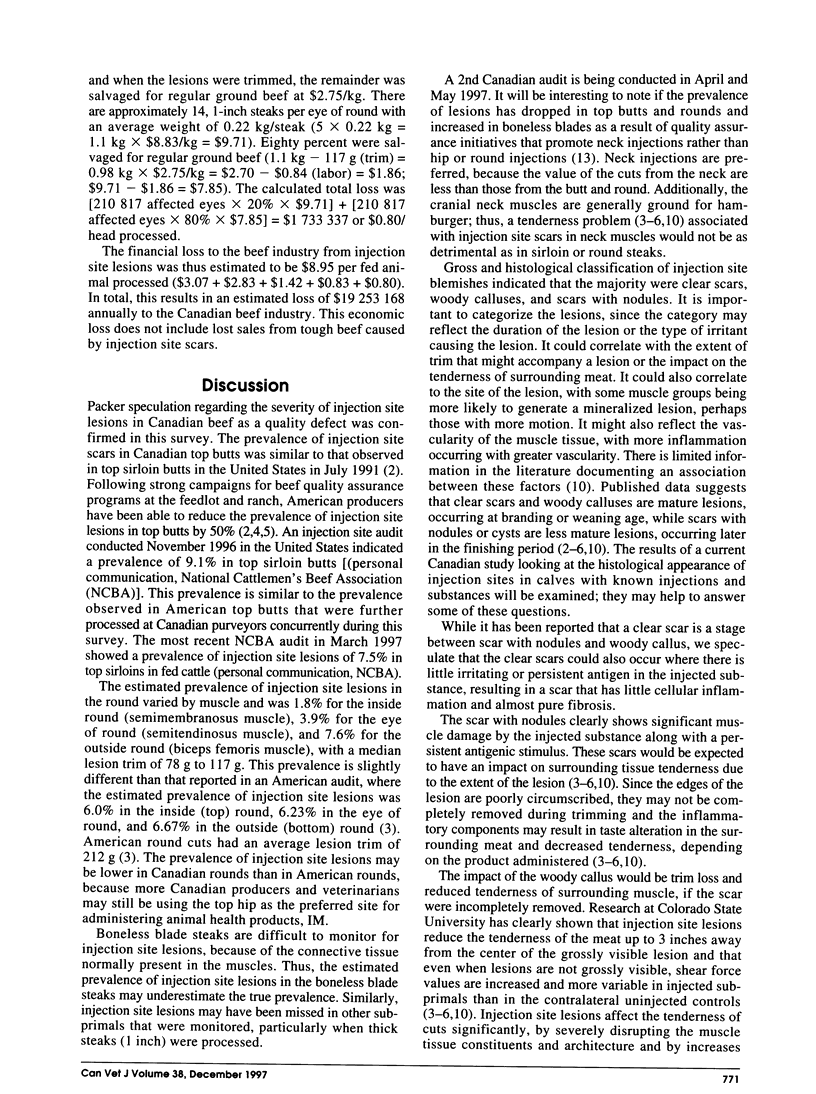
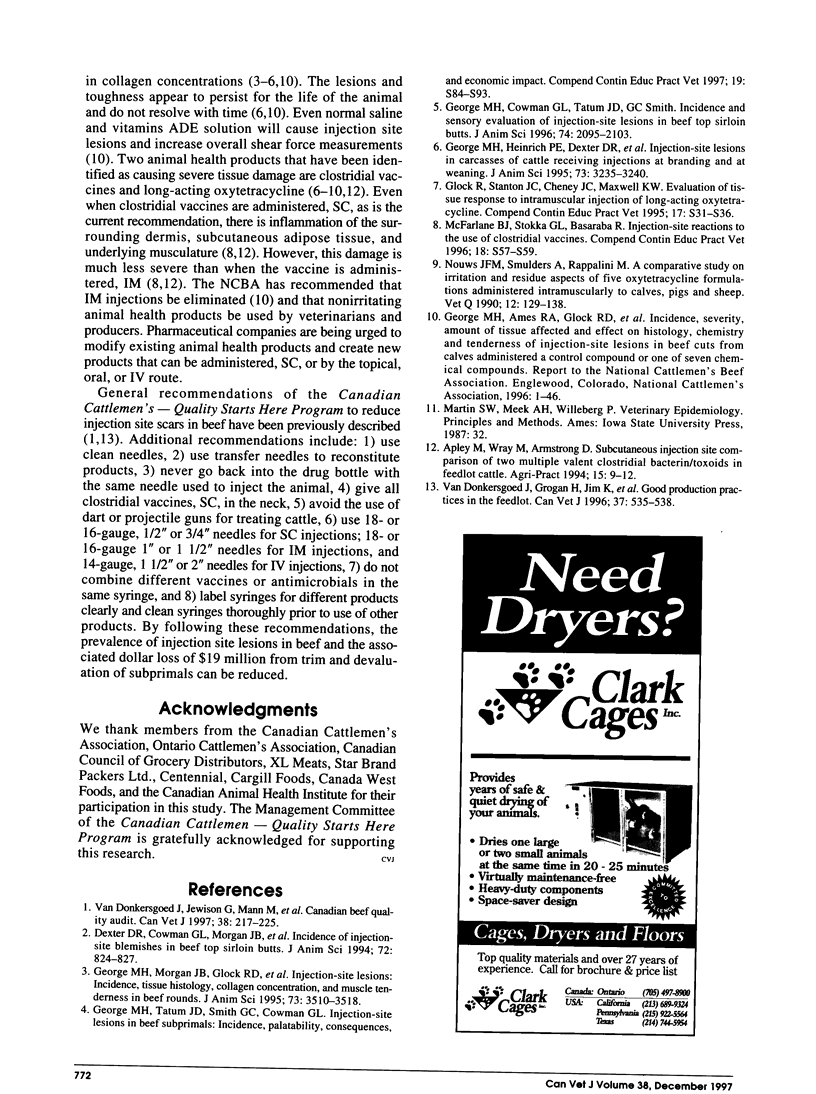
Selected References
These references are in PubMed. This may not be the complete list of references from this article.
- Dexter D. R., Cowman G. L., Morgan J. B., Clayton R. P., Tatum J. D., Sofos J. N., Schmidt G. R., Glock R. D., Smith G. C. Incidence of injection-site blemishes in beef top sirloin butts. J Anim Sci. 1994 Apr;72(4):824–827. doi: 10.2527/1994.724824x. [DOI] [PubMed] [Google Scholar]
- George M. H., Cowman G. L., Tatum J. D., Smith G. C. Incidence and sensory evaluation of injection-site lesions in beef top sirloin butts. J Anim Sci. 1996 Sep;74(9):2095–2103. doi: 10.2527/1996.7492095x. [DOI] [PubMed] [Google Scholar]
- George M. H., Heinrich P. E., Dexter D. R., Morgan J. B., Odde K. G., Glock R. D., Tatum J. D., Cowman G. L., Smith G. C. Injection-site lesions in carcasses of cattle receiving injections at branding and at weaning. J Anim Sci. 1995 Nov;73(11):3235–3240. doi: 10.2527/1995.73113235x. [DOI] [PubMed] [Google Scholar]
- George M. H., Morgan J. B., Glock R. D., Tatum J. D., Schmidt G. R., Sofos J. N., Cowman G. L., Smith G. C. Injection-site lesions: incidence, tissue histology, collagen concentration, and muscle tenderness in beef rounds. J Anim Sci. 1995 Dec;73(12):3510–3518. doi: 10.2527/1995.73123510x. [DOI] [PubMed] [Google Scholar]
- Nouws J. F., Smulders A., Rappalini M. A comparative study on irritation and residue aspects of five oxytetracycline formulations administered intramuscularly to calves, pigs and sheep. Vet Q. 1990 Jul;12(3):129–138. doi: 10.1080/01652176.1990.9694257. [DOI] [PubMed] [Google Scholar]
- Van Donkersgoed J., Grogan H., Jim K., Hunt T. D., Moss E. W., Warrack J., Myers D. Good production practices in the feedlot. Can Vet J. 1996 Sep;37(9):535–538. [PMC free article] [PubMed] [Google Scholar]
- Van Donkersgoed J., Jewison G., Mann M., Cherry B., Altwasser B., Lower R., Wiggins K., Dejonge R., Thorlakson B., Moss E. Canadian beef quality audit. Can Vet J. 1997 Apr;38(4):217–225. [PMC free article] [PubMed] [Google Scholar]


